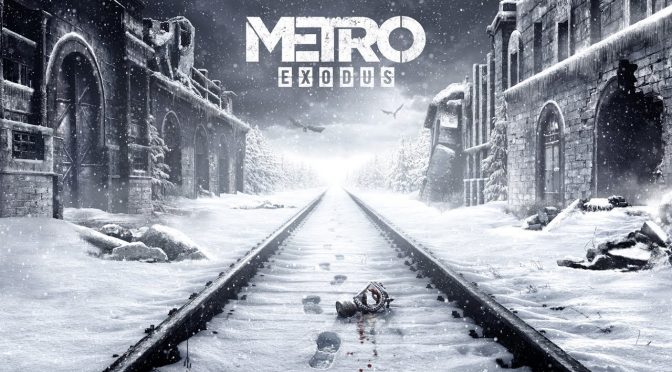The embargo for Metro Exodus has just been lifted and we can finally talk about this highly anticipated first-person title. And in case you’re wondering, yes; the game supports from the get-go both DLSS and real-time ray tracing RTX effects. As such, we can now share our first performance impressions of it.
For this initial test, we used an Intel i7 4930K (overclocked at 4.2Ghz) with 16GB of DDR3 RAM at 2133Mhz, NVIDIA’s RTX 2080Ti, Windows 10 64-bit and the GeForce 418.81 driver.
First things first. 4A Games has used RTX for the game’s Global Illumination, Ambient Occlusion and Indirect Lighting. Contrary to Battlefield 5, these improvements can be easily noticed when switching between the ray traced and the rasterized versions of Metro Exodus, and will indeed improve the game’s visuals.
However, and similarly to Battlefield 5, real-time ray tracing comes with a huge performance hit. Let’s take a look at two comparison screenshots in 2560×1440 with RTX ON (left) and OFF (right).
In order to address this huge performance hit, 4A Games and NVIDIA have added DLSS support to Metro Exodus, however DLSS is currently not that good. On the left you will find the RTX+DLSS screenshots and on the right you will find the non-RTX images (we strongly suggest opening them in new tabs).
Performance-wise, Metro Exodus runs with 60fps (though there are some drops to 55fps) at 2560×1440 with RTX and DLSS on Extreme settings with PhysX and HairWorks on the NVIDIA GeForce RTX2080Ti. However, you may have noticed that the RTX screenshots look blurry as hell. And that’s our biggest gripe with DLSS in Metro Exodus. While DLSS in 3DMark Port Royale and Final Fantasy XV looks amazing, the DLSS implementation in Metro Exodus is awful. We don’t know whether this can be fixed via a new driver from NVIDIA, however DLSS in Metro Exodus is underwhelming.
Below you can find a comparison between 2560×1440 with RTX+DLSS (left) and 1920×1080 with only RTX (right). As we can see, the game looks crisper and runs better in 1920×1080. This shouldn’t be happening. Not only that, but the sunlight, for some unknown reason, looks worse (less bright) when DLSS is used, something that has a negative impact on the whole image. Therefore, and until NVIDIA resolves all these DLSS issues, we strongly suggest avoiding it.
To better showcase the blurriness/low-res side-effects of DLSS, here are also some comparisons at 2560×1440 on Extreme settings with RTX enabled between DLSS On (left) and DLSS Off (right).
In conclusion, the NVIDIA GeForce RTX2080Ti can run Metro Exodus with all its bells and whistles (PhysX, HairWorks and RTX) at 1080p with constant 60fps. At 2560×1440, there are some framerate drops to 40-44fps so those seeking smooth framerates (above 53fps at all times) will not be able to get them. Still, the game can be considered playable at 1440p with RTX enabled on NVIDIA’s most powerful gaming graphics card. And last but not least, DLSS is bugged at the moment and even though it improves performance, it significantly reduces image clarity due to its blurriness so we strongly suggest avoiding it.
UPDATE:
NVIDIA has just released a new driver for its graphics cards. According to the release notes, the NVIDIA GeForce 418.91 WHQL driver provides the optimal gaming experience when using DLSS and Ray Tracing in Battlefield V and Metro Exodus. We went ahead and tested this new driver and unfortunately the game still looks blurry with DLSS enabled (the screenshots on the left are with DLSS enabled whereas the screenshots on the right are with DLSS OFF).
John is the founder and Editor in Chief at DSOGaming. He is a PC gaming fan and highly supports the modding and indie communities. Before creating DSOGaming, John worked on numerous gaming websites. While he is a die-hard PC gamer, his gaming roots can be found on consoles. John loved – and still does – the 16-bit consoles, and considers SNES to be one of the best consoles. Still, the PC platform won him over consoles. That was mainly due to 3DFX and its iconic dedicated 3D accelerator graphics card, Voodoo 2. John has also written a higher degree thesis on the “The Evolution of PC graphics cards.”
Contact: Email































